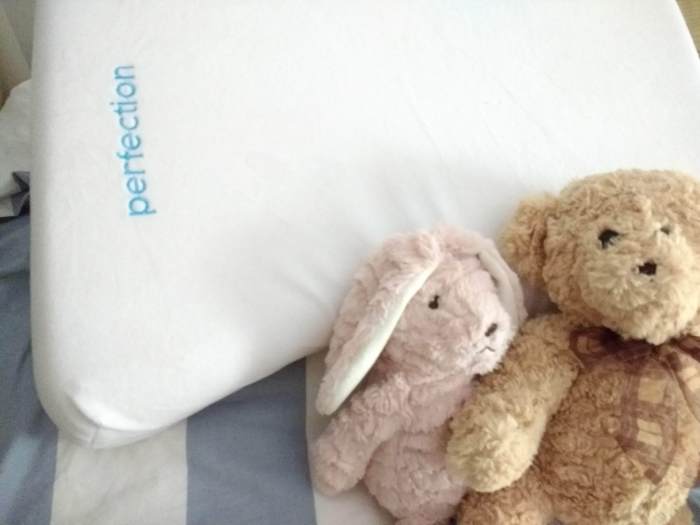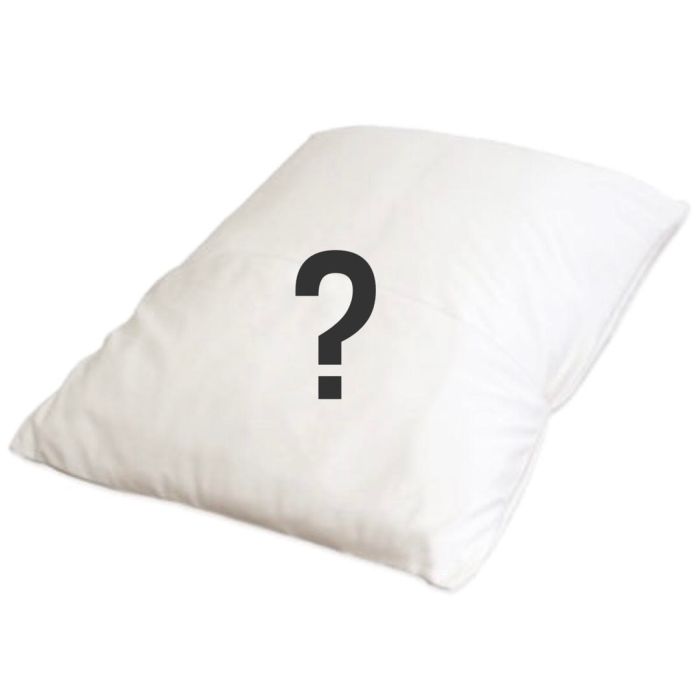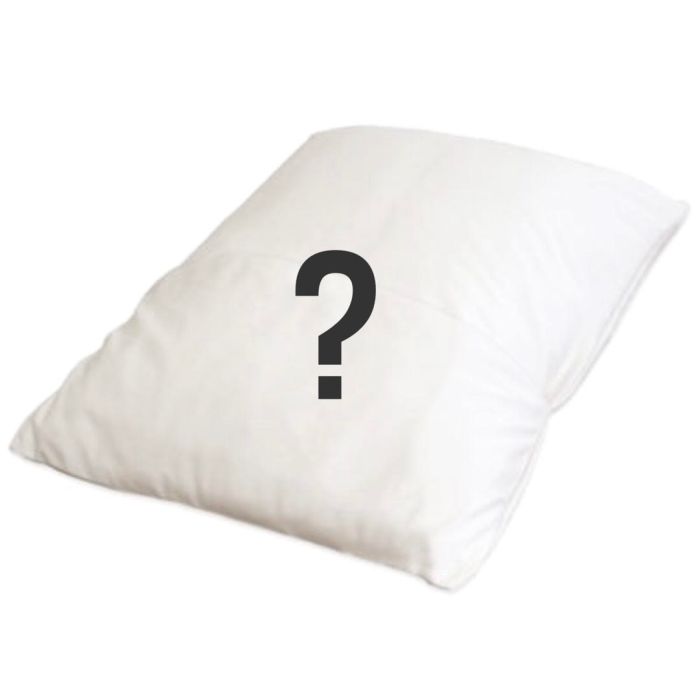When to replace your pillow sets the stage for a crucial discussion about sleep health and comfort. A worn-out pillow can lead to discomfort, neck pain, and even affect your overall well-being. This comprehensive guide delves into the factors that determine when it’s time to bid farewell to your current pillow and welcome a new, supportive companion.
From understanding the lifespan of different pillow materials to recognizing signs of deterioration, this post will provide you with the knowledge to make an informed decision. We’ll explore the impact of various factors like material type, hygiene, and environmental conditions on pillow longevity. Plus, we’ll cover the crucial link between pillow support and proper sleep posture, highlighting the importance of choosing a pillow that aligns with your individual needs.
Pillow Material and Construction
Choosing the right pillow is crucial for a good night’s sleep. Beyond comfort, the material and construction significantly impact the pillow’s longevity and support. Understanding the differences between various pillow fillings and their respective lifespan will help you make an informed decision.Different pillow materials offer varying degrees of comfort, support, and durability. The best pillow for you will depend on your individual sleep preferences and needs.
This section delves into the specifics of common pillow materials, highlighting their strengths and weaknesses.
Down and Feather Pillows
Down and feather pillows are known for their soft, luxurious feel and excellent breathability. The downy filling provides a naturally conforming shape, adapting to the head and neck. These pillows are typically lightweight and offer a plush feel. However, down and feather pillows can be prone to allergens and are often more expensive than other types.
Memory Foam Pillows
Memory foam pillows are renowned for their excellent support and conforming properties. The material molds to the shape of your head and neck, providing customized support. This feature is particularly beneficial for individuals with specific neck or back pain issues. However, memory foam pillows can sometimes retain heat, making them less suitable for those who tend to sleep warm.
Over time, memory foam can also lose some of its initial shape, affecting support.
Polyester Pillows
Polyester pillows are a popular and affordable choice. These pillows are typically made from synthetic fibers, making them hypoallergenic and resistant to allergens. They’re often a good alternative to down pillows, providing a balanced level of support and comfort. While offering good value, polyester pillows might not offer the same luxurious feel as down or memory foam.
Other Materials
Beyond the three main types, other materials like latex or buckwheat hulls are available. Latex pillows often provide excellent support and are durable. Buckwheat hull pillows, composed of small, hollow buckwheat hulls, promote airflow and can offer a unique level of support.
Durability and Longevity
The durability of a pillow is directly tied to its filling material and construction. Down pillows, due to their delicate nature, often have a shorter lifespan than memory foam or polyester. Memory foam pillows generally last longer, but the longevity can vary based on the density and quality of the foam. Polyester pillows, with their simple construction, can last for a considerable time, depending on the quality of the fabric and stitching.
Pillow Construction and Comfort
Pillow construction significantly impacts comfort and support. Pillows with a well-constructed interior, such as a tightly woven cover or reinforced seams, tend to retain their shape better. Loose filling can lead to uneven support and discomfort. The size and firmness of the pillow are also important factors to consider.
Identifying Wear and Tear
Signs of wear and tear vary depending on the pillow type. Down pillows may show signs of flattened or uneven filling, while memory foam pillows might lose their initial shape or firmness. Polyester pillows may exhibit fraying or wear on the fabric. Regular inspection for these signs can help determine the need for replacement.
Comparison Table
| Material | Pros | Cons | Lifespan (approx.) |
|---|---|---|---|
| Down | Soft, luxurious feel, excellent breathability | Can be expensive, susceptible to allergens | 3-5 years |
| Memory Foam | Provides excellent support, conforms to the head and neck | Can be hot, may lose shape over time | 5-7 years |
| Polyester | Affordable, hypoallergenic, good support | May not offer the same luxurious feel as down or memory foam | 5-8 years |
Signs of Deterioration: When To Replace Your Pillow
A pillow’s lifespan is directly tied to its condition. Over time, wear and tear, coupled with improper care, can lead to discomfort and reduced support. Understanding the visual signs of a worn-out pillow empowers you to make informed decisions about replacement.Recognizing these signs allows for proactive replacement, ensuring continued comfort and good sleep hygiene. By identifying these indicators, you can proactively address potential issues and maintain optimal sleep quality.
Visual Signs of Wear
Pillow deterioration often manifests visually. Flattened areas, sagging, and unevenness are common signs of a pillow losing its form and support. A pillow that once provided a consistent contour now shows a noticeable difference in its surface. These changes may not be immediately apparent, but consistent observation can reveal gradual deterioration. Visual inspection is crucial in assessing the overall health and structural integrity of your pillow.
Replacing your pillow isn’t just about comfort; it’s about your health! Just like you wouldn’t use a decades-old phone, your pillow’s support and hygiene can degrade over time. This is a critical factor to consider when evaluating the current state of your sleep. The ongoing legal battle between Oracle and Google, specifically regarding the Java programming language’s copyright, oracle google java copyright lawsuit trial supreme court request , highlights the importance of protecting intellectual property, much like ensuring your pillow provides consistent support for your neck.
So, when was the last time you swapped that pillow for a fresher one? A good rule of thumb is to replace your pillow every 1-2 years for optimal comfort and hygiene.
Checking for Excessive Wear and Tear
Regularly checking for excessive wear and tear is essential for pillow longevity. This involves a simple visual examination. Look for depressions or indentations in the pillow’s surface, as well as areas that appear excessively flattened or misshapen. Sinking in the center or a noticeable dip on one side suggests that the pillow may have lost its supportive capacity.
Observe if the pillow is maintaining its original shape or if it has become noticeably compressed or uneven. By actively checking for these subtle changes, you can anticipate the need for replacement before significant discomfort arises.
Pillow Hygiene and Longevity
Proper pillow hygiene plays a significant role in extending its lifespan. Regular cleaning and maintenance practices are essential for maintaining a healthy sleeping environment. A clean pillow minimizes the accumulation of dust mites, allergens, and other irritants, contributing to a healthier sleep experience. Maintaining a clean and hygienic pillow environment directly translates to better sleep quality and prolonged pillow life.
Avoid letting your pillow accumulate dust, dirt, or body oils, as this can contribute to its deterioration.
Cleaning and Maintenance Practices
Regular cleaning and maintenance are crucial for maintaining a pillow’s structural integrity and overall health. Washing your pillow regularly, as recommended by the manufacturer, helps to remove dust mites, dirt, and other impurities that can contribute to wear and tear. Avoid using harsh chemicals or excessive heat during cleaning, as these can damage the pillow’s fabric and filling.
Proper maintenance and cleaning can significantly extend the useful life of your pillow.
Potential Issues Shortening Pillow Life
Several factors can contribute to a pillow’s premature deterioration. These factors include:
- Frequent Exposure to Moisture: Moisture, such as spills or sweat, can damage the pillow’s filling and lead to mold or mildew growth. This can significantly shorten the lifespan of the pillow.
- Inadequate Support: A pillow that does not provide adequate support for your head and neck can lead to discomfort and strain, potentially accelerating the wear and tear process. Proper support is crucial for maintaining the pillow’s integrity and longevity.
- Harsh Cleaning Practices: Using excessive heat or harsh chemicals during cleaning can damage the pillow’s fabric and filling, leading to premature wear and tear. Following the manufacturer’s instructions for cleaning is critical to preserving the pillow’s quality.
- Exposure to Sunlight: Prolonged exposure to sunlight can fade the pillow’s fabric and degrade its filling, reducing its lifespan.
- Inappropriate Pillow Material: Choosing a pillow material that doesn’t align with your sleep preferences can accelerate wear and tear, resulting in a shorter lifespan.
Health and Comfort Considerations
Choosing the right pillow is crucial for a good night’s sleep, impacting not only your comfort but also your overall health. A well-suited pillow supports your head and neck, promoting proper spinal alignment and minimizing aches and pains. Ignoring these crucial aspects can lead to chronic discomfort and even more serious health problems.Proper pillow selection directly relates to maintaining a healthy sleep posture.
A supportive pillow prevents strain on the neck and spine, which are particularly vulnerable during sleep. Different sleep positions require different pillow heights and types to provide the best support.
Pillow Height and Neck Alignment
The height of your pillow significantly influences the alignment of your neck. An improperly sized pillow can cause the neck to bend unnaturally, leading to discomfort and potential pain. A pillow that is too high or too low can disrupt the natural curve of the cervical spine, causing neck stiffness and soreness upon waking. Finding the right pillow height is essential for maintaining proper neck alignment throughout the night.
Importance of Pillow Support for Sleep Positions, When to replace your pillow
The ideal pillow height varies based on your preferred sleeping position. Each position requires a different level of support to prevent neck strain and promote optimal spinal alignment. Back sleepers, side sleepers, and stomach sleepers all have unique needs in terms of pillow support.
Potential Health Implications of a Worn-Out Pillow
Using a worn-out pillow can lead to various health issues. The compromised support system of a deteriorated pillow may result in chronic neck pain, back pain, and headaches. These issues can interfere with daily activities and overall well-being. Over time, the reduced support of a worn-out pillow can lead to discomfort and long-term health issues.
Pillow Heights and Suitability for Different Sleepers
| Sleep Position | Ideal Pillow Height | Description |
|---|---|---|
| Side Sleepers | Medium | A medium-height pillow supports the head and neck in a neutral position, maintaining the natural curve of the cervical spine. This allows for a comfortable and balanced posture, reducing pressure points on the shoulders and neck. |
| Back Sleepers | Low to Medium | A low to medium-height pillow is best for back sleepers. It allows the head and neck to maintain a straight line with the spine, promoting proper alignment and reducing stress on the neck. |
| Stomach Sleepers | Low | Stomach sleepers generally require a low-profile pillow. This allows the head to rest in a neutral position, reducing strain on the neck and promoting proper spinal alignment. A pillow that’s too high can strain the neck and back, leading to discomfort and pain. |
Comparison of Ideal Pillow Heights
Side sleepers often benefit from a medium-height pillow that cradles the head and neck. This supports the natural curve of the spine and prevents the neck from twisting or bending unnaturally. Back sleepers typically prefer a low to medium-height pillow, which maintains a straight line from head to heels. This alignment reduces strain on the neck and spine. Stomach sleepers, conversely, need a low-profile pillow.
This allows for a neutral head position and minimizes pressure on the neck. These differing requirements emphasize the personalized nature of pillow selection.
Environmental Factors

Your pillow, a crucial part of your sleep sanctuary, is susceptible to the whims of its environment. Understanding how humidity, temperature, and storage affect its longevity and comfort is key to maximizing its lifespan and maintaining its support properties. Proper care in different climates can dramatically extend the pillow’s useful life.Environmental factors significantly impact a pillow’s material properties and overall condition.
Extreme temperatures, fluctuating humidity, and improper storage can accelerate wear and tear, leading to premature deterioration. Different materials react differently to these conditions, and knowing how to manage these factors is crucial for pillow care.
Humidity’s Impact on Pillow Longevity
High humidity can lead to mold and mildew growth, especially in pillows with absorbent materials like down or feather. Moisture can also cause the filling to clump or become compacted, leading to a less supportive and comfortable sleeping experience. Maintaining a pillow’s hygiene and structural integrity in humid environments requires extra attention.
Temperature Extremes and Pillow Care
Extremes in temperature, whether extremely hot or cold, can also affect a pillow’s integrity. Heat can cause certain materials to lose their shape and elasticity, while cold temperatures can make some materials brittle. It’s important to store pillows in a temperature-controlled environment to maintain their original shape and structure.
Replacing your pillow? It’s more than just a comfort thing; a worn pillow can impact your sleep quality. Similar to how foldable phones like the Razr, Z Flip, and Samsung Fold can break down over time, losing their functionality foldable phones breaking razr z flip fold samsung motorla. You might notice your pillow isn’t offering the support it once did, and it’s time for an upgrade.
Think of it as a necessary tech refresh for your sleep!
Preserving Pillows in Humid Climates
Maintaining a pillow in a humid environment requires proactive measures. Regularly air out the pillow to reduce moisture buildup. Consider using a dehumidifier in the bedroom, especially during the high humidity season. Using moisture-absorbing materials like silica gel packets within the pillowcase or storage container can also help. Always ensure the pillow is completely dry before storing it.
Preserving Pillow Condition in Various Climates
Different climates demand different strategies for pillow preservation. In dry climates, a pillow can dry out, causing the material to become brittle. Periodically misting the pillow with a water spray can help maintain moisture. In cold climates, storing the pillow in a climate-controlled environment or a well-insulated room is ideal. These steps are important to maintain the integrity of the pillow’s material and its performance over time.
Storing Pillows Properly
Proper storage is essential to maintaining a pillow’s integrity. Avoid storing pillows in direct sunlight or excessively hot locations. A cool, dry, and well-ventilated space is optimal. Pillows should be stored in breathable pillowcases or covers to allow for air circulation and prevent moisture buildup. Consider using a pillow protector to safeguard the pillow from dust, dirt, and other contaminants.
Pillow Storage Guide
| Climate | Storage Considerations |
|---|---|
| Humid | Store in a well-ventilated area, use dehumidifiers, and air out pillows regularly. |
| Dry | Store in a cool, dry, and well-ventilated area. Periodically mist the pillow to maintain moisture. |
| Cold | Store in a climate-controlled environment or a well-insulated room to avoid brittleness. |
| Hot | Store in a cool, dry, and well-ventilated area away from direct sunlight. |
Practical Guidelines for Replacement
Choosing the right pillow is crucial for a good night’s sleep. A worn-out or unsuitable pillow can lead to neck pain, headaches, and other discomfort. Understanding when and how to replace your pillow can significantly improve your sleep quality and overall well-being.Replacing a pillow is a straightforward process once you understand the key factors involved. This section provides a clear framework for making the decision, considering various scenarios and factors, and equipping you with a checklist to determine when it’s time for a new pillow.
Replacing your pillow is a surprisingly important part of maintaining good sleep hygiene. Beyond the obvious signs like visible stains or stuffing loss, consider the comfort level. If your neck or back feels stiff or you’re constantly tossing and turning, it might be time for a new one. In a similar vein, if you’ve been following the fascinating news about the Jeep Wrangler Rubicon Farout’s end of diesel era, jeep wrangler rubicon farout end of diesel , it might be time to consider your sleep quality and comfort as well.
Ultimately, listen to your body and replace your pillow when it stops supporting a good night’s rest.
Deciding When to Replace a Pillow
Determining when to replace a pillow involves a systematic approach. This involves evaluating the pillow’s condition, your sleep habits, and personal preferences. A structured process can guide you to make the right choice. 
Flowchart Image Description: A flowchart begins with a starting point. A series of interconnected boxes with questions are shown, such as “Is the pillow causing neck pain?” and “Does the pillow feel lumpy or uneven?”. If the answer is yes to any of these questions, the flowchart leads to a box stating “Replace the pillow”. If the answer to these questions is no, the flowchart continues to a box asking “Has the pillow been used for more than X years?” or “Is the pillow showing signs of significant wear?”. Following the answers to these questions, there are boxes directing either to “Replace the pillow” or to a box saying “Keep the pillow for now”. The flowchart ultimately leads to a decision point, whether to replace the pillow or continue using it.
Factors to Consider When Selecting a Replacement
Several key factors influence your choice of replacement pillow. Understanding these factors will help you select a pillow that aligns with your individual needs and preferences.
- Sleep Position: Your preferred sleeping position significantly impacts your pillow choice. Side sleepers often require a thicker pillow to support their neck, while back sleepers might prefer a thinner pillow or one with a different filling. Stomach sleepers usually need a firm pillow to keep their neck aligned with their spine.
- Pillow Material: Consider the material composition of your pillow. Different materials offer varying levels of support, comfort, and breathability. Memory foam, down, and feather pillows have distinct characteristics that cater to diverse preferences.
- Budget: The cost of a pillow varies significantly depending on the material, brand, and features. Setting a budget beforehand helps you narrow down your choices and find a suitable pillow within your price range.
- Health Considerations: If you have specific health concerns, such as allergies or neck pain, consider pillows that address these concerns. Hypoallergenic options and pillows designed for specific support needs can be beneficial.
Replacement Scenarios
Various situations might indicate a need for a new pillow. Understanding these scenarios can help you anticipate when a replacement is necessary.
- Significant Wear and Tear: If your pillow shows substantial signs of wear, such as significant sagging, lumps, or noticeable damage, it’s likely time for a replacement.
- Consistent Neck Pain: If you experience persistent neck pain after sleeping on your current pillow, replacing it might resolve the issue. Consider a pillow that provides better support and alignment for your neck.
- Allergic Reactions: If you’ve noticed allergies or skin irritation after using your pillow, it’s possible the material is causing the problem. Consider an alternative pillow material, such as hypoallergenic options.
Checklist for Determining Pillow Replacement
This checklist provides a systematic approach to evaluate your current pillow and determine if it’s time for a replacement.
| Criteria | Evaluation |
|---|---|
| Pillow Material | Is the material still intact and free from damage? |
| Pillow Support | Does the pillow maintain its shape and support throughout the night? |
| Pillow Comfort | Is the pillow comfortable and aligned with your preferences? |
| Sleep Quality | Are you experiencing any discomfort or pain while sleeping? |
| Overall Condition | Is there any noticeable wear and tear or damage to the pillow? |
Pillow Testing Methods

Choosing the right pillow is crucial for a good night’s sleep. A comfortable pillow supports your head and neck, preventing strain and promoting proper spinal alignment. To ensure you’re selecting a pillow that meets your individual needs, understanding how to test its firmness, support, and responsiveness is essential.Testing a pillow isn’t just about feeling its material; it’s about evaluating how it responds to your body’s unique needs.
This allows you to select a pillow that offers the right balance of support and comfort for optimal sleep quality.
Firmness and Support Testing
Evaluating a pillow’s firmness and support involves more than a simple squeeze. It’s about assessing how it conforms to your head and neck, providing adequate cushioning and maintaining a neutral spine alignment. Proper support is crucial to prevent pain and discomfort.
- Squeeze and Feel: Gently squeeze the pillow in different areas. A firm pillow will resist compression more than a soft one. A good pillow should have a balanced firmness throughout to provide consistent support.
- Lay Down Test: Lie on your back with your head and neck supported by the pillow. Observe how your head and neck align. The pillow should keep your head and neck in a neutral position, not too high or too low. If your neck feels strained or your head is tilted, the pillow may not be providing adequate support.
Pressure Responsiveness Assessment
A pillow’s ability to respond to pressure is a critical factor in comfort and support. A pillow that conforms well to your head and neck will provide better support and reduce pressure points.
- The “Pressure Point” Test: Place your head and neck on the pillow, and then apply gentle pressure to different areas of your head. A good pillow will conform to your head shape and distribute the pressure evenly. If you feel concentrated pressure points, the pillow may not be responding effectively to your body’s needs.
- The Side Sleeper Test: Lie on your side and observe how the pillow conforms to your shoulder and neck. A good pillow should support your head and neck, preventing discomfort or strain.
Pillow Compression Testing
Pillow compression tests can help determine the pillow’s resilience and ability to retain its shape after being compressed.
- The “Squeeze and Release” Test: Gently compress the pillow in different areas and observe how quickly it returns to its original shape. A good pillow should quickly return to its original form, indicating a good level of resilience. If it takes a long time to recover, it may not offer the support and responsiveness needed for a good night’s sleep.
Determining Appropriate Firmness
Pillow firmness is a highly personal preference. It depends on individual body types, sleeping positions, and preferences. There’s no single “correct” firmness.
- Body Type Consideration: Heavier individuals might need a firmer pillow for better support. Lighter individuals may find a softer pillow more comfortable.
- Sleeping Position Consideration: Back sleepers often benefit from a pillow that provides medium to firm support, while side sleepers may prefer a softer pillow to reduce pressure on the shoulders and neck.
Pillow Support Test for Different Head and Neck Sizes
A simple test can help determine the appropriate pillow support for your head and neck size.
- The “Head and Neck Support Test”: Place the pillow on a flat surface. Position your head and neck on the pillow, maintaining a neutral spine alignment. Measure the distance from the pillow’s surface to the top of your head and the distance from the pillow’s surface to the base of your neck. Adjust the pillow to achieve a comfortable alignment and consistent support.
The appropriate pillow should maintain the alignment of your head and neck without putting undue pressure.
Conclusion
In conclusion, replacing your pillow isn’t just about comfort; it’s about prioritizing your health and well-being. By understanding the signs of a worn-out pillow, considering your sleep position, and understanding the factors that impact pillow lifespan, you can make a proactive choice that supports a better night’s sleep. This guide provides the tools and knowledge to confidently determine when it’s time for a pillow refresh.
So, take a look at your pillow, consider the points discussed, and decide if it’s time for an upgrade!





